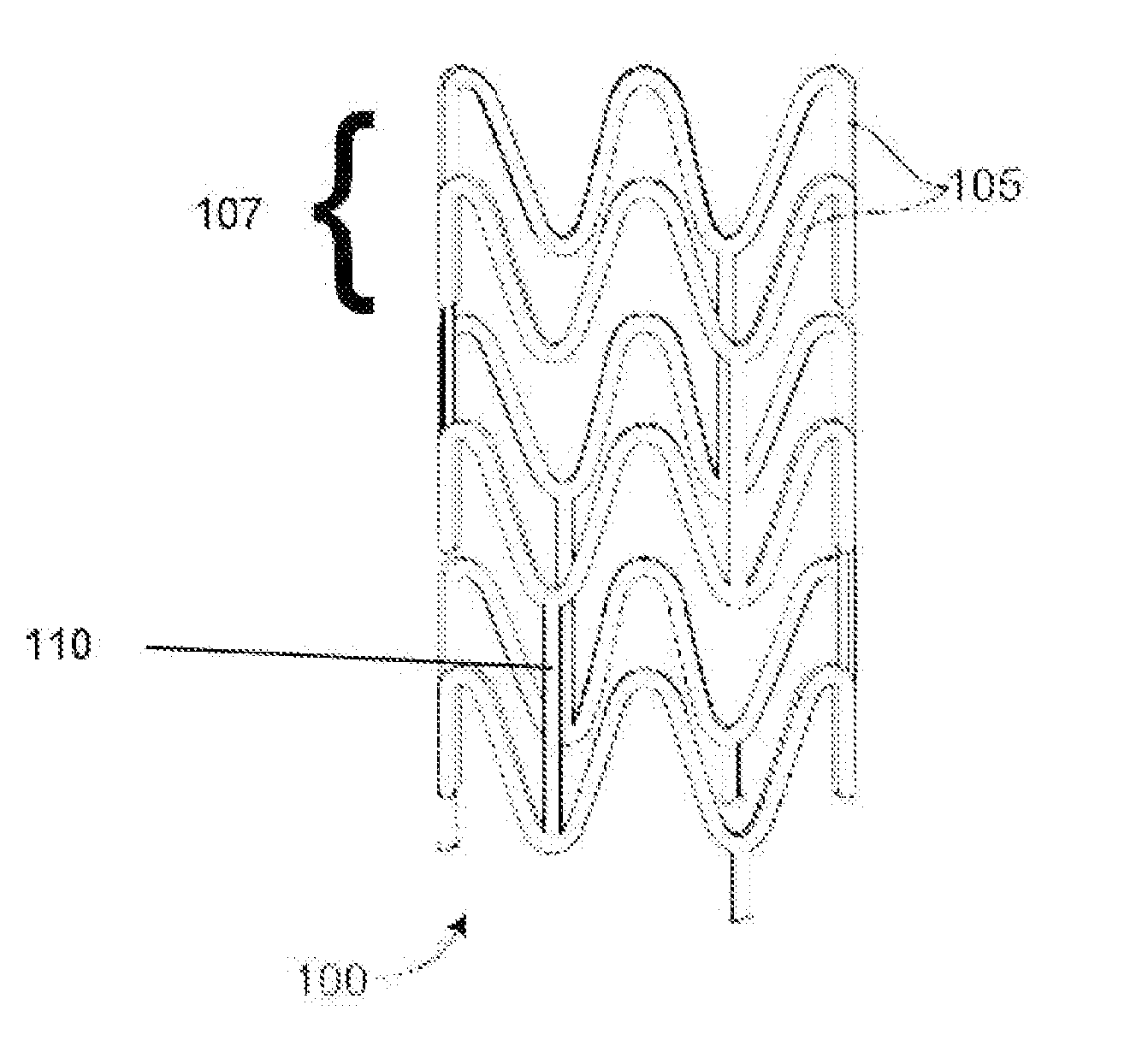Drug delivery device for peripheral artery disease
a peripheral artery disease and delivery device technology, applied in the field of polymer medical devices, can solve the problems of chronic recoil and strut fracture, significant problem of stenosis, and difficult treatment,
- Summary
- Abstract
- Description
- Claims
- Application Information
AI Technical Summary
Benefits of technology
Problems solved by technology
Method used
Image
Examples
Embodiment Construction
[0019]In many treatment applications using stents, such as coronary intervention, stents expand and hold open narrowed portions of blood vessels. To achieve this, the stent must possess a radial strength in an expanded state that is sufficiently high and sustainable to maintain the expanded vessel size for a period of weeks or months. This generally requires a high strength, rigid material. In the case of bioresorbable polymer stents, bioresorbable polymers that are stiff and rigid have been proposed and used in stents for coronary intervention. Such polymers are stiff or rigid under physiological conditions within a human body. These polymers tend to be semicrystalline polymers that have a glass transition temperature (Tg) sufficiently above human body temperature (approximately 37° C.) that the polymer is stiff or rigid at these conditions. Poly(L-lactide) (PLLA) is an example of such a material which remains stiff and rigid at human body temperature which facilitates the ability ...
PUM
| Property | Measurement | Unit |
|---|---|---|
| Tg | aaaaa | aaaaa |
| elongation at break | aaaaa | aaaaa |
| elongation at break | aaaaa | aaaaa |
Abstract
Description
Claims
Application Information
 Login to View More
Login to View More - R&D
- Intellectual Property
- Life Sciences
- Materials
- Tech Scout
- Unparalleled Data Quality
- Higher Quality Content
- 60% Fewer Hallucinations
Browse by: Latest US Patents, China's latest patents, Technical Efficacy Thesaurus, Application Domain, Technology Topic, Popular Technical Reports.
© 2025 PatSnap. All rights reserved.Legal|Privacy policy|Modern Slavery Act Transparency Statement|Sitemap|About US| Contact US: help@patsnap.com


